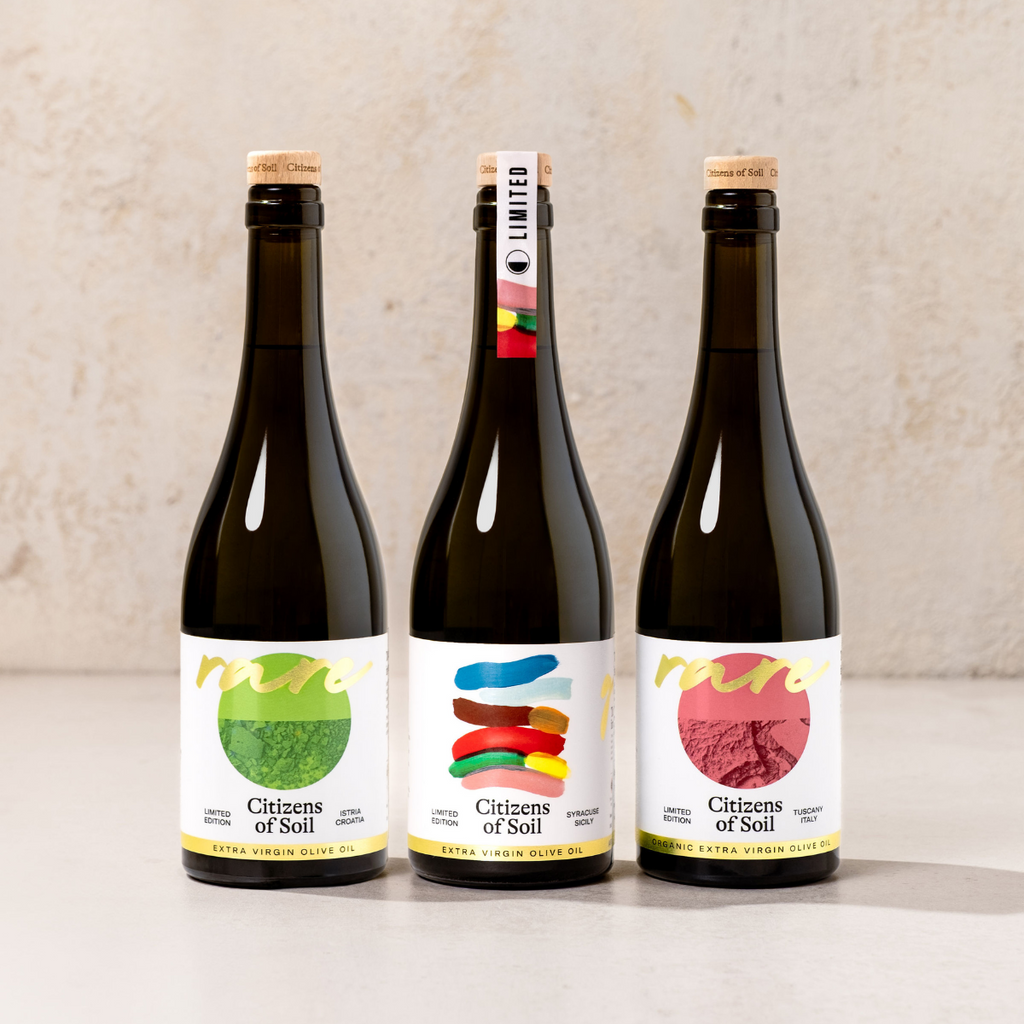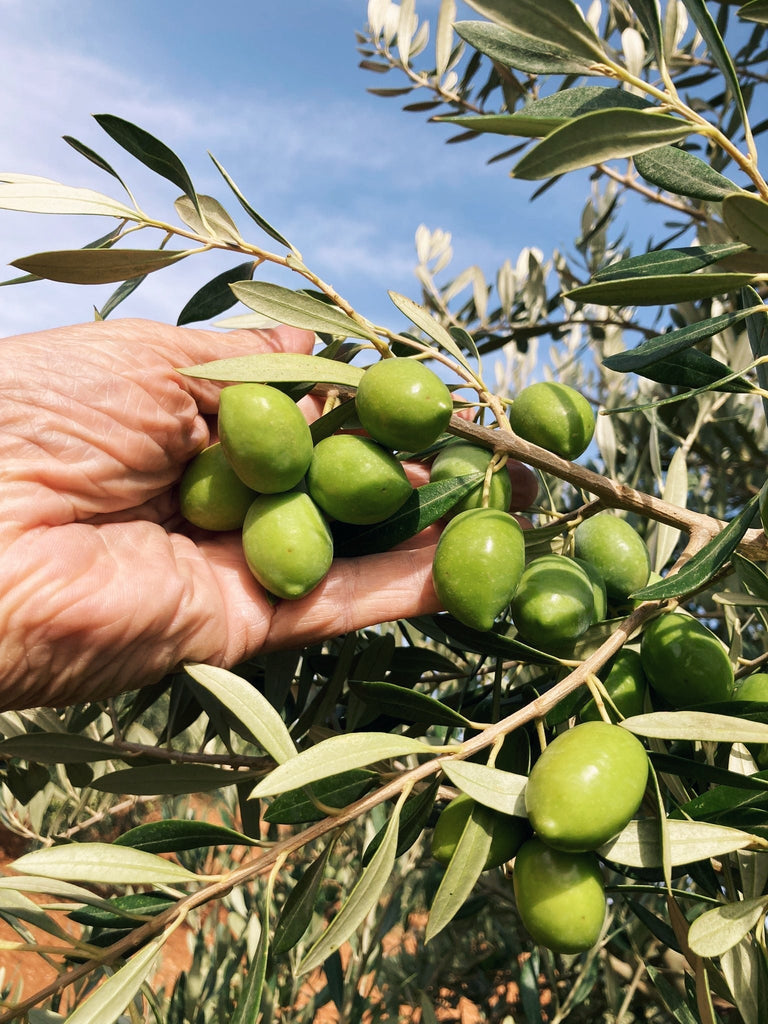Introducing the Istrian: Meet Lena and the family behind our newest olive oil
Where can you find the best olive oil in the world? We’re diving into a whole new region that’s likely not on a lot of people’s radars. But how did we get here and why are we now singing the praises of this foodie paradise…
**This article was originally written in 2023, when we released Lena's first batch of only 900 bottles from the Oct 2022 harvest, an oil *not* to sleep on.**
If you ask who makes the best olive oils in the world, the default will likely be an almost automatic “Italy.” The Italians are world-class at marketing their food and culture.
No doubt Italy makes absolutely incredible oils—some of the very best—but they’re not alone in that, nor are they the only ones with an ancient connection to this liquid gold.
Of course, this is subjective, but one particular peninsula in Northern Croatia has, for 7 years in a row, won the prize as the “best olive oil region in the world”, as voted on by what's essentially the Michelin-guide of EVOOs, Flos Olei.
Moreover, Istria has a rich history of making the best oils dating back to the Roman Empire, despite being a relative unknown on the international scene today.
As you well know by know if you follow us, we've been sipping our way across Mediterranean oils and what we can say is this: Istria has the most consistently high quality EVOOs we've seen.
So, we had to go and see what it was all about...
And Lena, along with her family groves, were a must-see. Everyone talked about them. Gordon Ramsey raved about them on a visit specifically to meet them and cook with their oil. And when I asked the olive oil community if there was a woman doing EVOO in Croatia, the first name was Lena.
Their award-winning oils have also been named in the top-10 in the world for small-batch oils with the highest international scores. But their passion for championing rare, local varieties and creating insanely-high quality EVOO in a sustainable way is what made us dream for the past year about the day we could finally share it with you…

What makes the Istrian Peninsula so perfect for olive oil quality?
We asked this question to producers there as well as over tasting cups of fresh oil with other olive oil experts.
Yes, it’s firmly in the Mediterranean, with that climate and terrain that yields the trifecta of dreamy food: truffles, wine, and olive oil.
It also has Roman DNA, with a culture that blends an Venetian-Italian influence into the mix that is felt from the architecture to the table.
But crucially, it seems that their success in olive oil is down to being small. A small country, a small region, and a proudly small-scale farming scene. (Yes, there are larger ones but even those don't come close to the commodity beasts that are found in places like Spain, Italy, and North Africa).
They realised they could never compete on volume with the other oil players, so why not compete on quality?
And they use this nimble size to share resources and knowledge, working almost as a cooperative to support the region’s standards.
Istrians seem to know all the basics that make extra virgin olive oil premium, and even tiny family producers invest in achieving a very tight plan to get there. Namely…
- Harvest by hand early in the season (before the fruit ripens).
- Keep the olives cool and handle carefully throughout the harvesting and transport process.
- Mill immediately after harvest in small batches (same day).
- Use immaculately clean & modern milling machines to extract the oil.
- Protect the final EVOO from any air, light, and heat until it’s being served by the final customer.
☝️This is standard amongst premium producers, and nothing unique to the area, but is certainly exceptional is that *so* many small-scale ones in a given area follow this plan.
Again, the consistency here is admirable.
So let's get to know the producers...

Meet Lena
Twenty years ago, Lena’s father, Silvano, revitalised an overgrown olive grove. On it lived 57 centennial trees, all of an indigenous local variety, Buža.
And from the moment Lena tried the juice from the fruits of these once-abandoned trees and experienced her first harvest, she knew that this was her calling.
"We believe that in modern times the finest olives come from smaller family- owned farms—those, who as we do, share a deep passion for quality, sustainability, and an understanding of the past to better guide us into the future," she explains.
Silvano, an engineer by profession, and “a true perfectionist”, as Lena goes on to say, is a master of the production and milling process—which is where so much of the quality of EVOO is formed.
So beyond the whole family lovingly looking after their 10 hectares of land, this crucial step in the process is managed in a state-of-the-art facility and under the keen supervision of a master.
Their land, with its “terra rossa” red soil rich in iron oxide), now has around 2,600 olive trees overlooking the Brijuni Islands of the shimmering Adriatic sea.
It’s a postcard in perfection. Which is why the family has decided not to expand or buy more trees, but instead live more in harmony with their groves, along with a mix of other fruit trees and a small veggie garden.
They also can proudly say they make some of the best olive oil in the world, but know this quality is best managed in small-batches where they can do so much of it by hand.

How to use this olive oil
As always, the best way to understand an oil is to get to know it. Put it in a little cup, swirl it around, and have a smell and a sip. (See more on how you should properly taste EVOOs.)
Let the aromas you smell guide you as to what to make with this oil.
It sits more in the “finishing oil” space, with a vibrant green balance of flavours and notes that can go across a range of hot and cold dishes.
What it taste like
It’s a field blend of local varieties from the family’s single estate, and it’s a stunning mix.
As an olive oil sommelier, I’m in awe of its balance.
You’ll instantly smell vibrant green notes. It’s so damn fresh.
On the palate, it’s bringing a rounded bitterness, with notes of green almond, chicory, and green tomato.
It’s got a peppery kick that hits with the same force as the other key sensations.
The finish is long, but super clean. No grease, just vibes (and delicious flavour).

What to pair it with
The tasting experience pulls me in loads of directions. The balance and richness makes me want to put it with cheesy, creamy dishes. The fresh green notes makes me want it on a salad.
Lena calls this her everyday use, as top chefs and restaurants in her area praise it for “its versatility for cooking at high temperature as well as it being great as a finishing oil for a wide range of dishes.”
So yes, this oil goes well in things like fish and salads as well as grilled meats and potatoes.
But you know by now we like to get really specific with the ways we’ve been inspired to test the oil.
Here’s what we’re cooking up:
- Risottos: A drizzle on top of your delicate, creamy risottos will add some flavour complexity.
- Arugula salads: This oil will bring the best out of bitter, leafy greens.
- Aged cheeses: Pair it with cheese for that lovely peppery punch.
- Producers pick: Seafood! Lena recommended using it specifically for a traditional Istrian dish called brudet. It is a fish/seafood stew, typically served with polenta. Here’s Gordon Ramsay’s take on it, using Lena’s oil.
If this particular extra virgin olive oil doesn’t get you excited, I just don’t know what will.
We realise it’s a more premium treat and it’s pushing the boat out in the category (I mean, have you ever seen a Croatian olive oil before?), but it was just far too incredible of an EVOO not to share with our community here.
And when you have folks as lovely as the Puhar-O’Grady family who perfect something so special to them while being better stewards of the land—we thought it was well worth the taste.
Enjoy.
Shop the blog




















